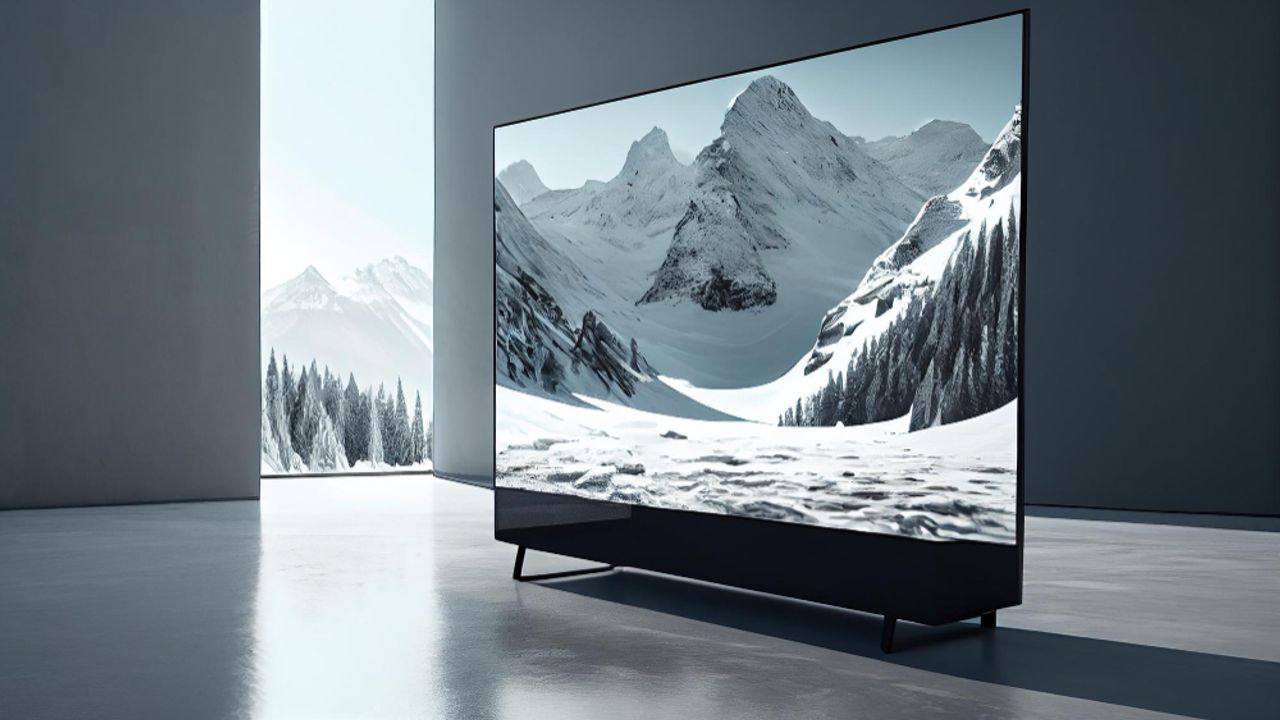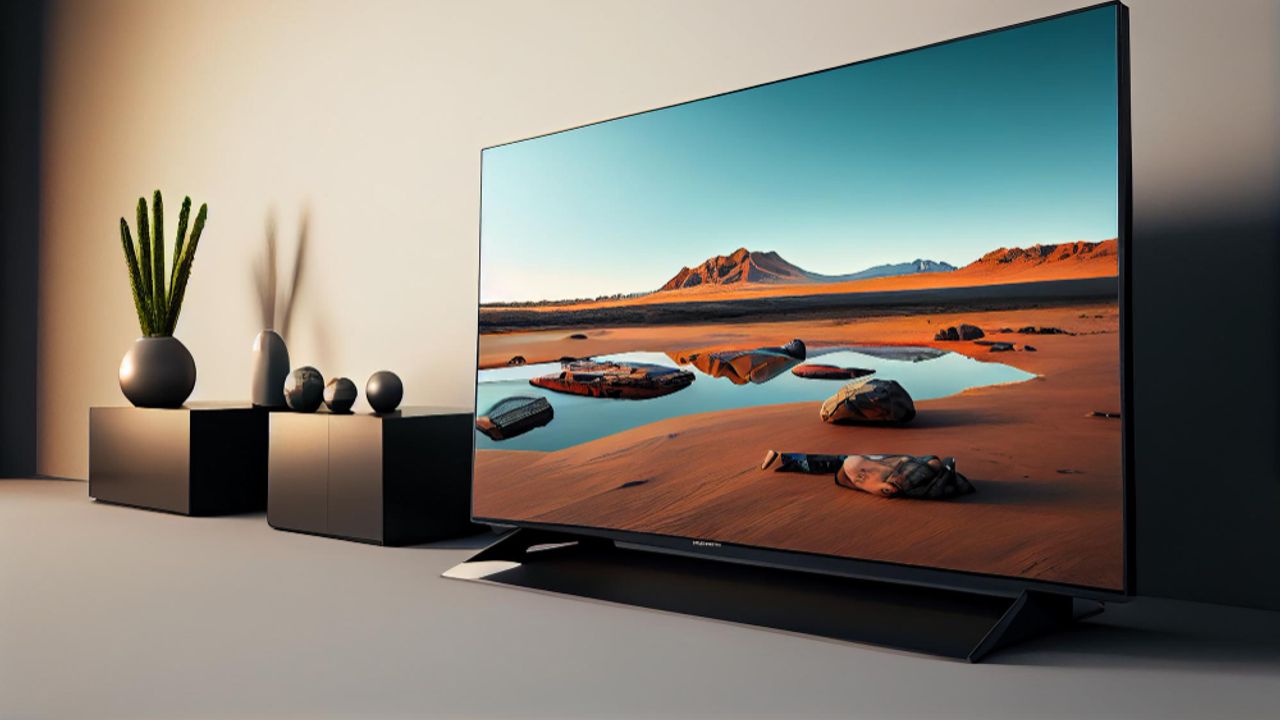Choosing the right TV can be a challenge, but it's important to take the time to do your research so you can get the best possible picture quality for your money. By following these tips, you can find the perfect TV for your needs.
1. Choose the Right Size:
Modern Ultra High Definition (UHD) or 4K TVs provide an enhanced level of detail,
which allows you to position yourself closer to the screen without the individual
pixels becoming noticeable. Nevertheless, if you sit too near, eye strain can still
occur. Even though this matter largely depends on individual preferences, there's a
straightforward equation that can act as a TV size guide and provide an initial
benchmark:
The recommended TV size is the viewing distance (in inches) divided by two.
As an illustration, let's assume that your regular seating position is 10 feet away
from your TV.
This distance translates to 120 inches (10 feet multiplied by 12 inches). After
dividing 120 by 2, you get 60 inches
Therefore, a 60-inch screen size would be suitable for your needs (bear in mind that
this measurement is diagonal across the screen).

2. Resolution: Minimum Full HD, Recommended 4K
One of the most important features of a TV is its resolution. Resolution refers to the
number of pixels that make up the image on the screen. The more pixels, the sharper and
clearer the picture. The most common resolutions for TVs are HD (720p), Full HD (1080p),
and 4K (2160p). HD TVs have 1280 x 720 pixels, Full HD TVs have 1920 x 1080 pixels, and
4K TVs have 3840 x 2160 pixels.
We recommend that you buy at least a Full HD TV, as HD TVs are becoming outdated and offer
lower quality.
4K TVs are the best option if you want the highest resolution and detail.
4K TVs have four times more pixels than Full HD TVs, which means they can display more colors,
contrast, and depth. 4K TVs also support HDR (High Dynamic Range), which is a feature that
enhances the brightness and color range of the image.
Some TVs also have AI upscaling, which is a technology that improves the quality of lower-resolution
content by adding more pixels and details. This way, you can enjoy your favorite shows and
movies in 4K even if they are not originally filmed or streamed in 4K.
3. Panel Type: OLED, QLED, or LED?
Another feature that affects the quality of the image is the panel type. The panel type
refers to the technology that is used to create the light and color on the screen. There
are different types of panels, such as OLED, QLED, LED, LCD, etc. Each panel type has
its own advantages and disadvantages.
OLED panels offer the best picture quality due to their ability to turn
each pixel off individually, resulting in pure black levels and infinite contrast ratio.
They are thinner, lighter, and have no backlight. However, OLED TVs can be expensive and
don't get as bright as other types, peaking at around 700 to 800 nits (a unit of brightness).
QLED TVs, on the other hand, use traditional LED LCD panels with an
extra quantum dot layer to boost brightness, often achieving between 1000 to 4000 nits. They're
great for viewing in bright rooms, and HDR content really shines on these panels.
LED panels are the most common, with costlier models featuring full
array local dimming. Recently, a new type of LED panel, known as mini-LED, has emerged, offering
better contrast and brightness control.

4. High Dynamic Range (HDR)
HDR (High Dynamic Range) is a feature that enhances the contrast range between the
brightest and darkest parts of the image. HDR content can display more details in the
shadows and highlights, as well as more vibrant and realistic colors. HDR content
requires a TV that supports HDR formats and has enough brightness and color range to
display it properly.
There are different HDR formats, such as HDR10, HDR10+, Dolby Vision, Dolby Vision IQ, and
HLG (Hybrid Log Gamma).
HDR10 is the most common and basic format that is supported by most 4K TVs.
HDR10+ and Dolby Vision are more advanced formats that use dynamic metadata to adjust the
brightness and color of each scene or frame individually. This results in better picture
quality and accuracy.
Not all TVs support all HDR formats, so you need to check which formats your TV can handle
before buying it.
You also need to check if your TV has enough brightness and color range to display
HDR content properly.
The HDR display must have either a peak brightness of over 1000 cd/m2 (nits) and a black
level less than 0.05 cd/m2 (a contrast ratio of at least 20,000:1) or a peak brightness of
over 540 cd/m2 (nits) and a black level less than 0.0005 cd/m2 (a contrast ratio of at least
1,080,000:1).

5. Operating System (OS)
Most TVs nowadays are smart TVs, which means they can connect to the internet and offer
various apps and services for streaming content, browsing the web, playing games, etc.
Smart TVs also have different operating systems (OS), such as Android TV, webOS, Tizen,
Roku TV, Fire TV, etc. Each OS has its own interface, features, app store, voice
assistant, etc.
We recommend that you buy a smart TV with an official Android TV OS, as it offers more flexibility, compatibility, and functionality than other OSs.
Android TV has access to Google Play Store, which has thousands of apps for streaming
content, games, music, etc. It also supports Google Assistant, Chromecast, Google Home,
etc.
6. Hardware: RAM, ROM and Processor
You should also check the hardware specifications of your smart TV before buying it. You
want a smart TV that has enough processing power, memory, and storage to run smoothly
and efficiently.
You should look for a smart TV that has at least a quad-core processor and 2GB RAM
and 16GB ROM.
7. Response Time or Frequency
The response time is the time it takes for a pixel to change from one color to another.
A faster response time is important for gaming and other activities that require
fast-moving images.
Consider the response time of the TV if you are into gaming or fast-action sports. A lower
response time means less motion blur. Usually measured in Hertz (Hz).
A 60Hz refresh rate means that the screen is refreshing itself 60 times every second.
8. Connectivity: HDMI, Wi-Fi and More
Another factor to consider when buying a new TV is its connectivity options. You want a
TV that has enough ports and wireless features to connect to your devices and
accessories. Some of the most common connectivity options are HDMI ports, USB ports,
Bluetooth support, Wi-Fi support, Ethernet port, optical audio output port, headphone
jack port, etc.
HDMI stands for High-Definition Multimedia Interface. It is a type of port that allows you
to connect your TV to other devices that support high-definition video and audio signals,
such as Blu-ray players, game consoles, laptops, etc. HDMI ports are essential for enjoying
the best quality of your TV.
You should also check if your TV supports HDMI 2.1 standard or not. HDMI 2.1 is a newer version
of HDMI that supports 4K at 120Hz or 8K at 60Hz, variable refresh rate, low latency mode.
And must have atleast one HDMI port that supports eARC (Enhanced Audio Return
Channel) for high-quality audio and atleast one HDMI 2.1 for best connectivity.
9. Brightness and Color Gamut
The brightness is measured in nits. The higher the nit rating, the brighter
the TV will be. A brighter TV is important for watching TV in a bright room.
The color gamut is the range of colors that a TV can reproduce. A wider
color gamut is important for getting accurate colors.
Conclusion
To sum up, choosing the right TV for your home can be a daunting task, but it can also
be fun and rewarding. You need to consider various factors such as budget, resolution,
panel type, HDR, smart features, and connectivity options. You also need to do some
research and compare different models and brands before making your final decision. We
hope this blog post has helped you understand some of the key aspects of buying a new TV
and given you some tips and suggestions. Happy shopping!
Here are some additional tips for choosing a TV:
- Read reviews before you buy. This will help you get an idea of what other people think about the TV you're considering.
- Shop around. You can often find the best deals on TVs by shopping around.
- Don't be afraid to negotiate. If you're buying a TV from a store, don't be afraid to ask for a discount.